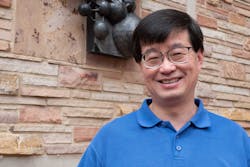Optical atomic clock research pioneer wins prestigious physics prize
Physicist Jun Ye, a Fellow of the National Institute of Standards and Technology (NIST)/University of Colorado Boulder’s JILA institute, has been awarded the 2022 Breakthrough Prize in Fundamental Physics for his pioneering research on optical atomic clocks. The prize selection committee cited him for “outstanding contributions to the invention and development of the optical lattice clock, which enables precision tests of the fundamental laws of nature.”
James K. Olthoff, who is currently performing the nonexclusive functions and duties of the under secretary of commerce for standards and technology and director at NIST, explains that Ye found innovative ways to apply the frequency comb that Nobel laureate Jan Hall (a professor of Ye’s) helped to develop, shattering records for the precision of atomic clocks and taking molecular chemistry to new ultracold frontiers with the late Debbie Jin.
Ye will receive $1.5 million, half of the $3 million physics prize. Hidetoshi Katori of the University of Tokyo will receive the other half of the prize for his work on atomic clocks.
Optical clocks operate at optical frequencies, which are much higher and therefore enable more precise timekeeping than the microwave frequencies in today’s timekeeping standards. Ye’s clocks use lasers to cool strontium atoms to billionths of a degree above absolute zero and trap them in grids of laser light called optical lattices, and are so precise that they would neither gain nor lose one second in some 15 billion years, roughly the age of the universe. Strontium is among the leading candidate atoms to replace the cesium that is currently used to define the international standard of time, the SI second.
Atomic clocks are crucial to GPS and advanced communications, but Ye’s clocks can extend the applications to make precision measurements of gravity, motion, magnetic fields, and many other quantities based on tiny changes in the atoms’ “ticking” rate between two energy levels.
Ye holds four patents based on unique laser technologies and has published 380 refereed research publications, more than 100 of them in the most prestigious international journals for physics, including Science, Nature, and Physical Review Letters.
